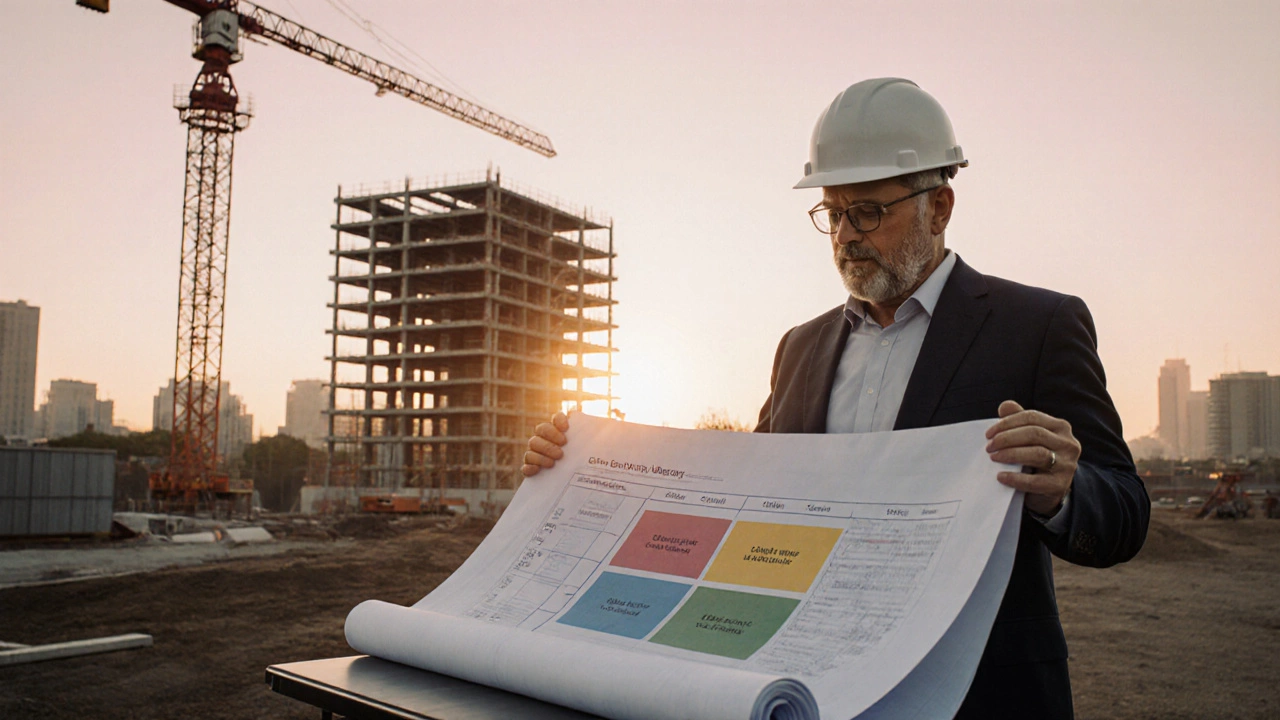Construction Management: Simple Steps to Keep Your Build on Track
If you’re starting a build, the biggest worry is staying on schedule and budget. Good construction management isn’t magic – it’s a set of habits you can follow every day. Below are the core actions that keep projects moving smoothly.
Plan the whole project before the first shovel hits the ground
Start with a clear scope. Write down exactly what you want: size, rooms, finishes, and any special features. Turn that list into a rough schedule with milestones – foundation, framing, roof, interior work. Even a hand‑drawn Gantt chart helps you see where tasks overlap.
Next, break the scope into small work packages. Assign each package a realistic time frame and a responsible person – whether it’s a subcontractor, foreman, or yourself. When every piece has an owner, you avoid the “who’s doing what?” shuffle later.
Control the budget with real‑time numbers
Budget slips happen when you don’t track costs daily. Open a simple spreadsheet, list each line item (materials, labor, permits), and update it every time you get an invoice or change order. Compare the actual spend against the forecast each week – that way you spot overruns early.
Don’t forget contingency. Set aside 5‑10 % of the total cost for surprises like soil issues or price hikes. When you dip into the contingency, you know it’s a real problem, not just a budget slip.
Another cheap trick is bulk ordering. Buying cement, steel, or timber in larger quantities often saves 5‑15 % and reduces delivery trips, which also cuts site traffic.
Effective communication is the glue that holds the plan and budget together. Hold a short 15‑minute morning briefing on site. Use a whiteboard to show today’s tasks, any safety alerts, and who’s on which job. This habit stops confusion and keeps everyone accountable.
When you need to discuss changes, write them down immediately. A simple change‑order form with the new scope, cost, and timeline prevents “I thought we agreed” arguments later.
Risk management might sound like a buzzword, but it’s just listing what could go wrong and planning fixes. For a new build, common risks are weather delays, material shortages, and permit holdups. Write a two‑column table: risk – mitigation. Example: "Heavy rain – schedule indoor work or use temporary covers." Review the table weekly.
Finally, use technology that fits your comfort level. A free app like Trello or a spreadsheet with conditional formatting can send you alerts when a task slips. You don’t need fancy ERP software to stay organized.
By planning ahead, tracking costs daily, communicating clearly, and preparing for risks, you turn a chaotic construction site into a well‑run project. Try these habits on your next build and watch the timeline stay tight, the budget stay realistic, and the stress drop dramatically.
Understanding the 1‑3 Rule in Commercial Construction

Learn what the 1‑3 rule is, why it matters in commercial construction, and how to apply it to keep projects on schedule and budget.
read moreUnderstanding How a Building Contractor Works

Building contractors are crucial in both small and large-scale construction projects. They manage all the work from planning to execution, ensuring everything goes smoothly and on schedule. Knowing how they operate can save time and money and help in choosing the right contractor. This article delves into the roles, responsibilities, and tips for effectively working with a contractor.
read more



